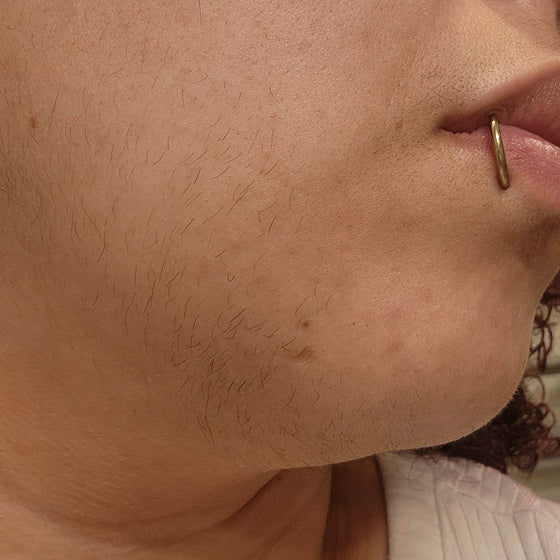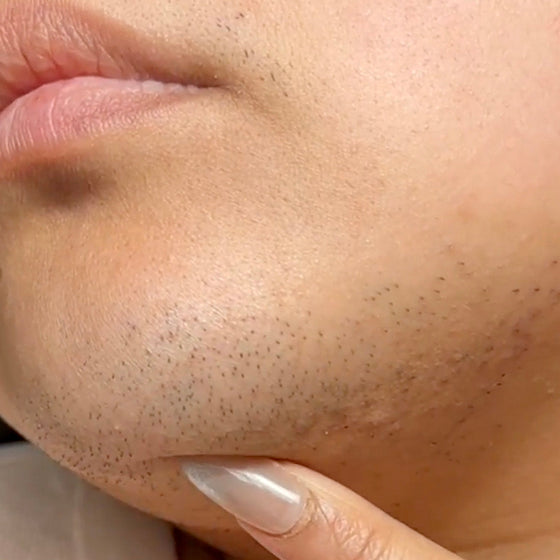We’ve all dreamed of a world where smooth, hair-free skin lasts forever—no razors, no creams, no fuss. Waxing often feels like a step toward that dream, with results that outlast shaving and promise softer regrowth. But can waxing really deliver permanent results, or is it just wishful thinking? If you’ve ever wondered whether you can wax your way to hair-free bliss, you’re not alone. Let’s uncover the truth about waxing and how it stacks up in the quest for long-term smoothness.
Does Waxing Remove Hair Forever?
Answered simply, waxing does not get rid of hair permanently.
Waxing removes hair by pulling it out from the root. The process weakens the hair follicle over time, which can make hair grow back slower and finer. However, it doesn’t destroy the follicle entirely, so regrowth is inevitable.
The idea of waxing as a permanent solution is a common misconception. While waxing does have some long-term effects, it’s not truly permanent. Let’s dive into why.
The Role of Regular Waxing
Consistent waxing weakens the hair follicle over time. In some cases, this can lead to a significant reduction in hair growth, with finer and sparser regrowth.
Over years of regular waxing, certain hair follicles may even stop producing hair entirely. However, this isn’t a guarantee, and results vary from person to person.
Why Waxing Results Vary
Your genetics and hormones are the biggest factors that determine how your hair responds to waxing. For example, people with thick, coarse hair might notice slower progress in achieving finer regrowth than those with lighter hair. Hormonal changes, like those from pregnancy, menopause, or imbalances, can cause new hair growth. This can happen even in areas where hair growth had slowed down.
Can Waxing Ever Mimic Permanent Hair Removal?
Waxing doesn't kill the hair follicle like laser or electrolysis. However, it can give semi-permanent results in certain situations.
Areas that have been waxed regularly for years may see little to no regrowth due to sustained follicle damage. Still, it’s important to understand that waxing alone won’t deliver completely permanent results.
What Are the Long-Term Effects of Waxing?
Waxing offers several benefits for those looking for a semi-permanent solution. Over time, you may notice that your hair grows back softer, finer, and sparser. The process also exfoliates your skin, removing dead cells and leaving it smoother and more polished. However, maintaining these effects requires consistency. Stopping waxing can allow your hair to return to its natural texture and thickness over time.
Think of waxing as a grooming method that enhances the quality of regrowth, rather than eliminating it altogether.
When to Consider Other Options
If you’re looking for a hair removal method that provides truly permanent results, waxing might not meet your needs. Alternatives like laser hair removal or electrolysis go deeper by targeting the follicle itself, permanently reducing or eliminating hair growth.
For an effective, long-lasting solution you can use at home, Lumi IPL stands out as a game-changer. Unlike waxing, Lumi IPL uses Intense Pulsed Light technology to safely and painlessly target hair follicles at their root. Over time, this weakens the follicles and significantly reduces regrowth. Lumi IPL works on multiple areas, from legs to underarms, and even sensitive spots like the bikini line. Plus, it eliminates the mess and discomfort of waxing, giving you smoother, longer-lasting results without leaving your house.
Smooth Skin That Lasts: What You Should Know About Waxing
Waxing is an excellent option for those who want longer-lasting results compared to shaving, but it’s not a permanent fix.
Regular waxing can slow down hair regrowth and may cause some hair follicles to stop producing hair. However, it does not provide permanent hair removal.
For a truly long-term solution, alternatives like Lumi IPL or laser treatments are worth considering. Understanding how waxing impacts hair growth helps you choose what’s best for your skin and lifestyle. This knowledge can guide you in deciding whether to continue waxing or explore a more permanent solution.
FAQs
Can waxing lead to permanent hair removal?
Waxing removes hair from the root, but it doesn’t eliminate the follicle permanently. Over time, repeated waxing can weaken hair growth, making it finer and sparser. For permanent results, you’d need treatments like electrolysis or laser hair removal.
How long does it take for hair to grow back after waxing?
Hair typically regrows after 3–6 weeks, depending on your hair growth cycle. Over time, waxing can reduce how often you need to do it, as hair grows back thinner. Regular waxing may give you longer-lasting smoothness.
What are the pros and cons of waxing for long-term hair reduction?
Waxing can provide semi-permanent hair reduction but requires commitment.
- Pros: Smooth skin, reduced regrowth over time, exfoliating benefits. Best for those looking for longer results than shaving.
- Cons: Painful, potential for ingrown hairs, and expensive over time. Not permanent. Requires hair to grow out before the next session. Can irritate sensitive skin.
How does repeated waxing impact hair follicle health?
Frequent waxing can damage the hair follicle, leading to finer, sparser hair over time. In rare cases, it may cause follicles to stop producing hair altogether. However, these effects vary greatly among individuals.
What role does the anagen phase of hair growth play in waxing?
Waxing is most effective when hair is in the anagen phase, the active growth stage. This allows the root to be pulled out more completely. Regular waxing schedules align with this cycle for better results.
Why does waxing not permanently destroy hair like laser treatments?
Unlike laser hair removal, which targets and destroys the follicle with light energy, waxing only removes the hair shaft. The follicle remains intact and capable of regrowth. Permanent hair removal requires damaging or disabling the follicle directly.


.png?v=1727993165793&options=w_350)
.jpg?v=1724421708187&options=w_350)




